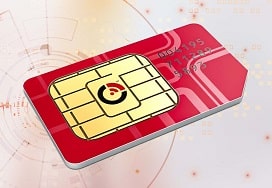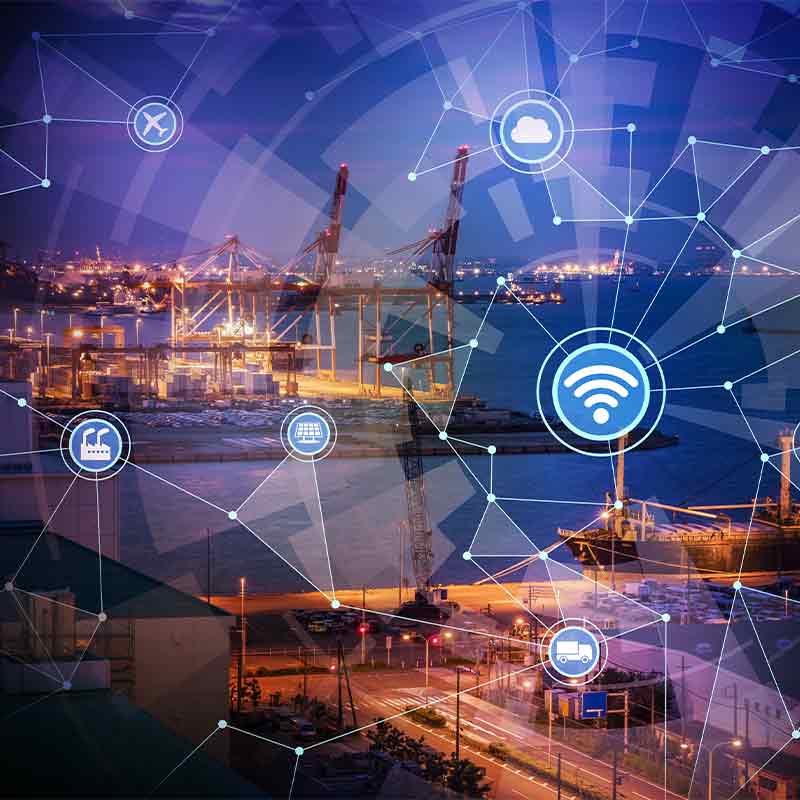Iot Revolution Technologies Guide to Real-Time IoT Monitoring

The emergence of Internet of Things (IoT) connectivity has revolutionized numerous industries, together with transportation. One of probably the most impactful functions is in vehicle monitoring methods, which merge conventional GPS technology with superior IoT capabilities. This synergy enhances visibility and supplies a comprehensive understanding of vehicle movements in real-time.
IoT connectivity enables seamless communication between vehicles and tracking systems. By equipping vehicles with IoT units, businesses can collect essential knowledge points similar to location, pace, fuel consumption, and even engine health. This real-time knowledge can be monitored remotely, permitting fleet managers to make knowledgeable choices rapidly. Not solely does this enhance operational effectivity, but it also promotes safety and reliability in transportation.
Moreover, the applying of IoT in vehicle tracking can significantly reduce operational costs. Businesses can optimize their routes based on real-time site visitors conditions, guaranteeing well timed deliveries and lowering gas bills. The ability to monitor vehicle health can also preemptively identify maintenance wants, thus avoiding the costs associated with breakdowns and emergency repairs.
Remote Monitoring Solutions Gateway for Medical Device Monitoring
Security is one other crucial benefit supplied by IoT connectivity in vehicle monitoring systems. Advanced monitoring allows for swift responses to incidents such as theft or unauthorized use. In the unfortunate event of a vehicle being stolen, monitoring units can provide real-time updates to legislation enforcement, drastically rising the possibilities of restoration. This built-in security layer not solely protects property but also offers peace of mind to fleet homeowners.
Integration with other IoT devices can further amplify the benefits of vehicle tracking techniques. For occasion, wearables for drivers can monitor their medical conditions and alert management about fatigue or other points. This holistic approach ensures that each vehicle and driver safety are prioritized. With the mix of varied IoT units, organizations can create a safer and more efficient work environment.
Role Of Smart Sensors In Iot Basics of IoT Remote Monitoring
Data analytics turns into a game-changer when applied to the info harvested from IoT-connected vehicle tracking methods. Organizations have the opportunity to generate insights from trends in driver behavior, vehicle performance, and even gasoline consumption patterns. This level of study not only facilitates higher useful resource management but additionally informs strategic planning transferring forward.
Another significant advantage of IoT connectivity in vehicle monitoring is the enhancement of customer support. By offering stay updates to prospects in regards to the status of their deliveries, companies can foster transparency and trust. Knowing when to count on their shipments boosts customer satisfaction and might lead to repeat business, an important part in a aggressive marketplace.
The scalability of IoT solutions can be noteworthy. As a business grows and its fleet expands, integrating new automobiles into an current monitoring system is comparatively simple. This adaptability allows companies to respond successfully to adjustments in demand and operational requirements with out overhauling their complete infrastructure.
Remote Monitoring Solutions Manage Devices with IoT Monitoring
The international push for sustainability has additional fueled the adoption of IoT in vehicle monitoring techniques. Organizations can monitor their carbon footprints by analyzing vehicle emissions and gas consumption patterns. Through this knowledge, they will implement sustainable practices, such as eco-friendly routing, thereby contributing to a more sustainable future. Iot Remote Asset Monitoring Solution.
However, the implementation of IoT connectivity for vehicle monitoring techniques isn't with out its challenges. Concerns concerning knowledge privacy and cybersecurity are on the forefront. Companies must invest in strong safety measures to protect sensitive information and guarantee compliance with rules. The stakes are high; any breach may have critical consequences not just for the corporate but additionally for its clients and stakeholders.
Vendors providing IoT options should prioritize the event of safe platforms while maintaining user-friendly interfaces. This steadiness is crucial for gaining widespread acceptance of these technologies in the transportation sector. The more accessible and secure these systems are, the more likely organizations will adopt them.
The way forward for IoT connectivity in vehicle tracking methods appears promising. As technologies continue to evolve, improvements similar to edge computing and advanced AI algorithms will further improve the capabilities of those methods. These advancements will lead to smarter, extra intuitive vehicle tracking options that can analyze data and make choices in real-time, thereby lowering the necessity for human intervention.
Iot Remote Monitoring Solution Importance of Industrial Remote Monitoring
As autonomous automobiles gain traction, the mixing of IoT in vehicle monitoring systems turns into even more essential. These vehicles rely on advanced connectivity to navigate my response safely and efficiently. The insights gained from current vehicle monitoring techniques can inform the event of more refined algorithms, finally enhancing the efficiency of autonomous fleets.
Investing in IoT connectivity for vehicle tracking systems additionally encourages collaboration across numerous sectors. Logistics companies, automotive producers, and technology suppliers can work together to create complete solutions that handle widespread challenges. This collaborative strategy is important for driving innovation and guaranteeing the long-term success of IoT functions in transportation.

Understanding the broader implications of IoT connectivity in vehicle tracking helps in shaping future insurance policies helpful hints and regulations. Stakeholders must interact in dialogues surrounding finest practices, knowledge security, and sustainability to pave the finest way for a data-driven environment. Such discussions can foster an ecosystem where technology benefits not just businesses, but society as a whole.
In conclusion, IoT connectivity for vehicle monitoring systems stands as a transformative pressure inside the transportation industry. Its myriad benefits, from operational effectivity and price reduction to enhanced security and customer satisfaction, make it an essential software for contemporary businesses. The challenges confronted, significantly in areas like knowledge privacy and cybersecurity, should be addressed via concerted efforts from all stakeholders. As the technology continues to evolve, the collective objective ought to be to harness its potential for creating safer, extra efficient, and sustainable transportation solutions.
Remote Monitoring Manage Devices with IoT Monitoring
- Enhanced real-time knowledge transmission permits steady monitoring of car places, enhancing route optimization and security.

- Integration with advanced GPS technology permits for precise coordinates, reducing the risk of misrouting or vehicle loss.
Remote Monitoring Using Iot Innovation in IoT Remote Monitoring
- Use of cellular, satellite, and LPWAN networks offers versatile connectivity options depending on geographic locations and necessities.
- Data analytics supplied by IoT connectivity helps predictive maintenance, alerting owners to potential mechanical issues earlier than they turn out to be important.
- Iot Remote Monitoring Solution
Iot Remote Asset Monitoring Solution Top 20 Systems Transforming IoT Industries
- Geofencing capabilities enable for automated alerts when automobiles enter or exit predefined areas, enhancing safety and operational efficiency.
- Cloud-based platforms supply seamless data storage and accessibility, allowing fleet managers to evaluate historical data from anywhere.
- Integration with cellular functions facilitates user-friendly interfaces for both drivers and fleet managers to trace and handle vehicles effectively.
- Real-time alerts and notifications enhance response times throughout emergencies, offering instant help based mostly on vehicle status.
Iot Remote Monitoring And Control Basics of IoT Remote Monitoring
- Interoperability with other IoT gadgets can enhance vehicle monitoring techniques, permitting for complete fleet administration methods.
- Sustainable practices can be supported through IoT connectivity by optimizing routes and lowering fuel consumption, contributing to environmental goals.
What is IoT connectivity in vehicle monitoring systems?undefinedIoT connectivity refers again to the integration of Internet of Things technology in vehicle monitoring techniques, allowing autos to communicate in real time with a central server or software. This permits efficient monitoring, information collection, and analysis to improve fleet administration and vehicle security.
Iot Remote Monitoring Solution Insights from IoT Monitoring Reports
How does IoT enhance the accuracy of vehicle tracking?undefinedIoT enhances accuracy by using GPS sensors, accelerometers, and other technologies embedded in automobiles. This information is sent through IoT networks for real-time processing, providing exact location, pace, and behavioral insights that enhance monitoring reliability.
What are the advantages of utilizing IoT in vehicle monitoring systems?undefinedThe advantages embrace real-time visibility of car areas, improved route optimization, reduced operational prices, enhanced security by way of monitoring driver conduct, and improved customer support via dependable supply estimates.
It Remote Monitoring Software Cost Efficiency of IoT Monitoring
Are there any privacy issues related to IoT vehicle tracking?undefinedYes, privacy considerations exist, notably regarding data assortment and usage. Implementing sturdy data safety measures and allowing customers to manage their data might help mitigate these issues and guarantee compliance with privacy laws.
What forms of IoT connectivity options can be found for vehicle monitoring systems?undefinedCommon IoT connectivity choices include cellular networks (4G, 5G), satellite communication, Wi-Fi, and LoRaWAN. Each choice has its advantages and is chosen based on coverage, cost, and specific use case requirements.
How secure is IoT connectivity for vehicle tracking systems?undefinedSecurity varies by implementation; nevertheless, reputable providers use encryption, safe information transmission protocols, and common software program updates to guard in opposition to unauthorized access and data breaches.
Can IoT vehicle tracking systems present predictive maintenance alerts?undefinedYes, IoT vehicle monitoring techniques can analyze information from vehicle sensors to foretell when maintenance is required, lowering downtime and stopping bigger, expensive repairs via well timed interventions.
Remote Monitoring Solutions Comprehensive Remote Monitoring Solutions
What is the function of AI in enhancing IoT vehicle tracking systems?undefinedAI performs a critical position by analyzing huge amounts of information collected via IoT systems to determine patterns, predict driver behaviors, optimize routes, and improve overall decision-making for fleet management.
How user-friendly are IoT vehicle tracking applications?undefinedMost IoT vehicle tracking functions are designed with person experience in mind, that includes intuitive interfaces and dashboards. User training and support enhance adoption and efficient use of the system capabilities.